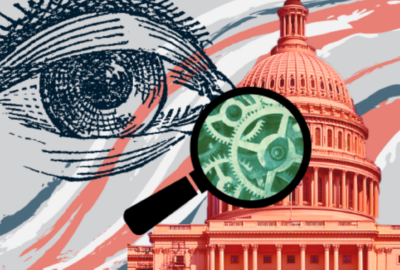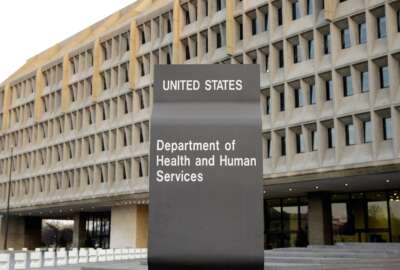Hubbard Radio Washington DC, LLC. All rights reserved. This website is not intended for users located within the European Economic Area.
On Air: Federal News Network
Trending:
Experts say administration proposal puts FEHB on the ropes
The White House wants to carve out the prescription drug piece and give OPM the ability to negotiate prices through a third party. But experts say this change w...
wfedstaff | June 4, 2015 1:48 pm
The Obama administration’s proposal to carve out the prescription drug benefit out of the Federal Employee Health Benefits program into a separate item could spell the beginning of the end for the 50-year-old program.
Should the deficit reduction super committee approve the change, experts say, it would be the first of many steps to dismantle the FEHB program.
“The logic in this proposal is seriously flawed,” said James Morrison, a former director of the FEHBP for the Office of Personnel Management in the 1980s and now president of Morrison and Associates. “It would severely limit the health plan’s ability to access the drug claims in real time or a near real time basis to identify enrollees who need care management, interventions and who need to be incented to make appropriate choices in their drug use. A carve-out would reduce both the continuity of care and the accountability imposed on the care if we are trying to restrain overall costs and maintain or have the healthiest population as possible.”
Morrison consults for Blue Cross, Blue Shield and other major companies on legislative and regulatory issues that affect health care.
Walt Francis, a consultant and FEHB expert, who has been a guest on Federal News Radio, echoed Morrison’s comments.
“I cannot overemphasize, there is not one single study, there is not one GAO study, not one CBO, not one outside piece of writing, no paper, demonstrating that anything about these proposals has any origin in fact,” Francis said. “As Jim put it, it’s a solution in search of a problem when we don’t know there is a problem.”
Morrison, Francis and others spoke during a panel discussion Wednesday on the FEHB proposals sponsored by the American Enterprise Institute in Washington.
AEI invited OPM, the administration, the Postal Service and the federal employee unions to participate about why these proposals make sense, but all either declined or did not respond.
FEHB proposal gets a lot of support
The administration sent two proposals to Congress earlier this summer. The first would let OPM contract directly with pharmacy management services as part of an effort to lower prescription drug costs. The administration estimated this would save the government $1.6 billion over 10 years. The White House said giving OPM the ability to negotiate drug prices would help overcome a fragmented purchasing strategy and take advantage of volume buying.
The administration also submitted a proposal to let the Postal Service pull out of the FEHB program and create its own defined health benefit program.
House and Senate lawmakers support carving out prescription oversight from the FEHB, but Congress is less excited about the USPS plan.
Morrison said the need to bring together a fragmented purchasing of drugs is not based on fact.
“The purchasing of prescription drugs is not fragmented because there is not a single prescription drug benefit in the whole program,” he said. “The prescription drug benefits or pharmaceutical benefits are designed by each carrier to be integrated with their medical offerings. It would only be a fragmented purchasing if you had a single benefit and several entities purchasing identical benefit.”
He added the proposal ignores the fact that utilization drives savings not prices. For example, Morrison said, if 10 employees use a certain drug, the way the costs are reduced to the plan is by reducing how many people use that drug, not cutting the price of the drug by 5 percent.
He said the current plan works well because carriers compete for enrollees based on total cost, and if the government removes the drug piece, then the competition changes. Morrison said he believes some plans may drop out.
Francis said the move to a pharmacy benefit manager also would increase costs to the employees. He said the four giant pharmacy management services firms who cover about 230 million people, such as Medco or Express Scripts, wouldn’t blink an eye at adding the government’s 8 million employees and retirees.
“The four firms each on average, let’s say, have 60 million lives covered, and OPM will come in and say ‘Blue Cross used to cover 5 million, we now will give you a contract for 8 million, give us a better deal,'” Francis said. “If I’m Express Scripts or Medco, I think my first reaction is, I may not laugh in their face, but the notion that they’ve brought some really valuable commodity to the table to entitle them to a better deal than IBM, General Motors or General Electric — it’s not real.”
Studies show integration saves money
Studies show by integrating pharmacy and health care plans, providers save between 2.7 percent and 6.2 percent, Morrison added.
And Francis said the Defense Department and the Veterans Affairs Department separated the two benefits. He said officials with the military’s Tricare program testified a few years ago they were seeing a rise in drug prices that was three times as fast as the FEHB.
“If you are the sole purchaser, but you have to buy the product, you will pay a pretty good price, probably, especially if the sellers know this. Here’s the problem, if you have several sellers, you could play one off against the other,” said Joseph Antos, a scholar in residence at AEI and a former assistant director at the Congressional Budget Office who focused on health care issues. “To hire one Pharmacy Benefits Manager, as this proposes OPM to do … that confers some, maybe considerable, monopoly power on the PBM. You have a buyer who can’t back out, and the seller, who has a five year contract and can’t count on getting it renewed, so why don’t they try to make money in the first five years. Are we going to get a good deal? I wouldn’t bet on it.”
Despite the concerns about the proposal, the administration is getting wide support from lawmakers and employee unions.
The Office of Management and Budget did not respond to a request for comment on why it believes the FEHB proposal makes economic sense.
The American Federation of Government Employees supports the proposal because carving out the pharmacy benefits is the only way to get better prices because there is little competition and less transparency, said Jackie Simon, the union’s public policy director.
She said in an email to Federal News Radio that statutory pricing is what the VA and DoD and Bureau of Prisons and the Indian Health Service have, and can do direct negotiations for maximum prices.
“This plan still gives the PBMs a lot of leverage to set prices, but at least there will be more transparency, a first step toward cost control,” Simon said. “The danger to federal employees would be some kind of carve out of Rx drugs — making it one of those notorious ’employee pay all’ pseudo benefits. That has been proposed in the past, and we have opposed it vehemently.”
Francis added the support from Capitol Hill and the unions also comes from the fact this proposal seemingly would affect federal employees the least as compared to other ideas to increase workers contributions toward retirement or freeze pay raises for another year.
Other options for savings are available
Morrison said he is unsure why these proposals have legs. He said believes the proposal comes from several audits that asked whether the FEHB was getting a good deal on drug prices or from a mandate to OPM from OMB to save money and this was an easy idea already out there.
Morrison said OPM and others seem to have lost sight on the fact that the FEHB program is not self funded by the government. The carriers are the ones at risk and have to compete and that makes it more difficult for the government to dictate prices.
Francis said the estimated $1.6 billion in savings are minimal especially considering employees will spend $120 billion-to-$130 billion on prescription drugs over the next year.
Other ways to find savings make more sense, including raising employee premiums.
The government pays on average up to 72 percent of an employees’ health care premium for those in the general schedule. The Postal Service pays an even higher rate of the health plans premium.
“The premium cost to this program is in excess of $40 billion a year. If the government share went down 1 percent, that is $400 million a year in savings,” Francis said. “Now I don’t propose that, but it is the case the Postal Service, which is the agency in trouble is the one that pays roughly 80 percent of the total premium cost. If you said, you will take the Postal Service to the all-government average, that’s an 8 percent reduction of their share and some billions of dollars per year.”
Francis added other options for improving FEHB and saving money would be to reduce the cost of retiree insurance especially for USPS, let enrollees and the government pay less in premiums and have same level of care by encouraging retirees to use Medicare more often.
Francis said the CBO found the Medicare proposal would save the FEHB program more than $1 billion a year. And yet another way would be to change the contribution formulas so employees and agencies understand and share in the benefits when a federal employee chooses a lower cost plan than the one they are in.
RELATED STORIES:
Pay freeze through 2015 part of Issa’s super committee recs
OPM advocates for innovations to FEHB
Analysis: FEHB changes coming to your wallet
Copyright © 2024 Federal News Network. All rights reserved. This website is not intended for users located within the European Economic Area.
Jason Miller
Jason Miller is executive editor of Federal News Network and directs news coverage on the people, policy and programs of the federal government.
Follow @jmillerWFED





